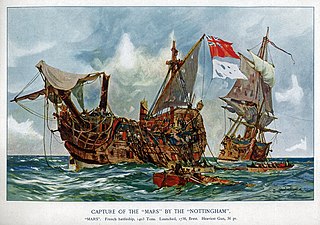
HMS Nottingham was a 60-gun fourth-rate ship of the line of the Royal Navy, built at Deptford Dockyard and launched on 10 June 1703. She was the first ship to bear the name.
HMS Rupert was a 64-gun third rate ship of the line of the Royal Navy, launched at Harwich Dockyard on 26 January 1666 and broken up in 1769.
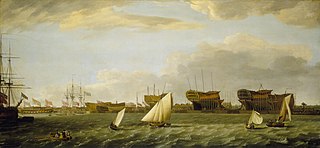
HMS Plymouth was a 52-gun third-rate frigate, built for the navy of the Commonwealth of England and launched at Wapping in 1653. By 1677 her armament had been increased to 60 guns.
Lyme was a 52-gun third rate Speaker-class frigate built for the navy of the Commonwealth of England at Portsmouth, and launched in 1654.
HMS Monck was a 52-gun third rate frigate built for the navy of the Commonwealth of England at Portsmouth and launched in 1659. She retained her name after the Restoration of the monarchy in 1660. By 1677 her armament had been increased to 60 guns.

President was a 38-gun fourth rate frigate of the Royal Navy, originally built for the navy of the Commonwealth of England by Peter Pett I at Deptford Dockyard, and launched in 1650.
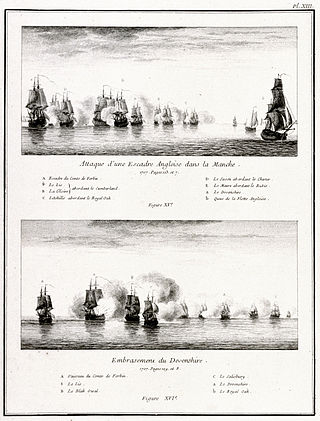
HMS Salisbury was a 50-gun fourth rate ship of the line of the Royal Navy, built by Richard and James Herring at Baileys Hard on the Beaulieu River in Hampshire, England, and launched on 18 April 1698.
HMS Winchester was a 60-gun fourth rate ship of the line of the English Royal Navy, launched at Bursledon on 11 April 1693.

HMS Medway was a 60-gun fourth rate ship of the line of the Royal Navy, launched at Sheerness Dockyard on 20 September 1693.

HMS Canterbury was a 60-gun fourth-rate ship of the line of the Royal Navy, launched at Deptford on 18 December 1693.

HMS Windsor was a 60-gun fourth rate ship of the line of the Royal Navy, launched at Deptford on 31 October 1695.

HMS Dreadnought was a 64-gun third rate ship of the line of the Royal Navy, launched at Blackwall Yard in 1691. She was reduced to a fourth rate in 1697.
HMS Norwich was a 50-gun fourth rate ship of the line of the Royal Navy, launched at Deptford on 24 August 1693.
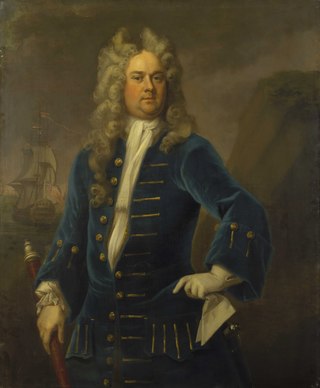
HMS Chatham was a 50-gun fourth rate ship of the line of the Royal Navy, launched on 20 October 1691 at Chatham Dockyard.

HMS Plymouth was a 60-gun fourth rate ship of the line of the Royal Navy, built at Devonport Dockyard to the 1706 Establishment of dimensions, and launched on 25 May 1708.
HMS Sunderland was a 60-gun fourth rate ship of the line of the Royal Navy, built to the 1719 Establishment at Chatham Dockyard, and launched on 30 April 1724.

HMS Dragon was a 60-gun fourth rate ship of the line of the Royal Navy, built to the 1733 proposals of the 1719 Establishment at Woolwich Dockyard, and launched on 11 September 1736.

HMS Medway was a 60-gun fourth rate ship of the line of the Royal Navy, built to the 1733 proposals of the 1719 Establishment at Rotherhithe, and launched on 26 May 1742.

HMS Dunkirk was a 60-gun fourth-rate ship of the line of the Royal Navy, built by Edward Allin at Woolwich Dockyard to the draught specified by the 1745 Establishment as amended in 1750, and launched on 22 July 1754.
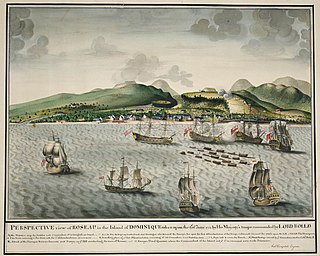
HMS Montagu was a 60-gun fourth rate ship of the line of the Royal Navy, designed by Edward Allin and built at Sheerness Dockyard to the standard draught for 60-gun ships as specified by the 1745 Establishment, amended in 1750, and launched on 15 September 1757.













